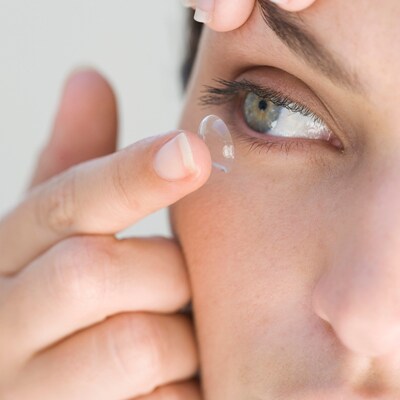One-third of contact lens wearers sought care for potentially preventable eye problems
Press Release
Embargoed Until: Thursday, August 20, 2015, 1:00 p.m. ET Contact: Media Relations(404) 639-3286

More than 99 percent of survey respondents reported at least one risky behavior. The majority of wearers reported:
- Keeping their contact lens cases for longer than recommended (82.3 percent);
- “Topping off” solution in the case—adding new solution to the existing solution instead of emptying the case out fully before adding new solution (55.1 percent); or
- Wearing their lenses while sleeping (50.2 percent).
An online survey was administered to a sample of contact lens wearers to determine how often contact lens wearers engaged in behaviors that could put them at risk for an eye infection. CDC collaborated with the Contact Lens Assessment in Youth (CLAY) group, a multi-university group of researchers, to conduct the survey.
A separate survey was used to estimate the number of contact lens wearers – about 41 million adults. Taken together, the survey results indicate that millions of Americans could be at risk for serious eye infections because of poor contact lens hygiene behaviors.
“Good vision contributes to overall well-being and independence for people of all ages, so it’s important not to cut corners on healthy contact lens wear and care,” says CDC Medical Epidemiologist Jennifer Cope, M.D., M.P.H. “We are finding that many wearers are unclear about how to properly wear and care for contact lenses."
To prevent eye infections, contact lens wearers should:
- Wash hands with soap and water and dry them well before touching contact lenses;
- Take contacts out before sleeping, showering or swimming;
- Rub and rinse contacts in disinfecting solution each time they remove them;
- Rub and rinse the case with contact lens solution, dry with a clean tissue and store it upside down with the caps off after each use;
- Replace contact lens cases at least once every three months;
- Avoid “topping off” solution in lens case (adding fresh solution to old solution); and
- Carry a backup pair of glasses in case contact lenses have to be taken out.
For more information on preventing eye infections and proper contact lens wear, please visit: www.cdc.gov/contactlenses.